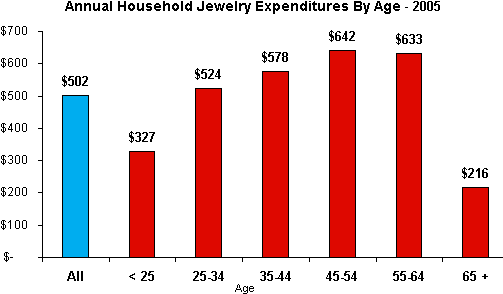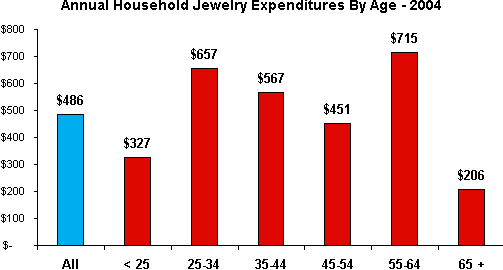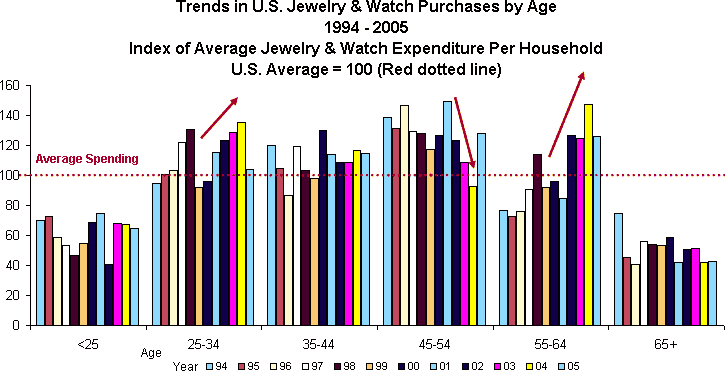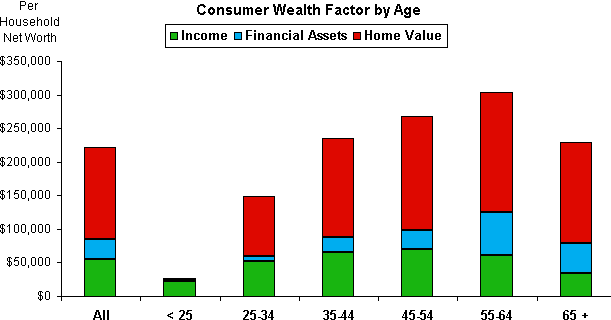IDEX Online Research: Consumer Jewelry Expenditures by Age - Boomers Are Back!
August 23, 07
After cutting back on jewelry expenditures for the past four years – 2001 through 2004 – Baby Boomers age 45-54 stepped up their spending dramatically in 2005. This trend was in line with demographers’ predictions that wealthy Boomers would spend heavily on luxury goods such as jewelry. However, it leaves open the question, “What happened to the Boomers in 2001 through 2004?” The short answer: we’re still waiting for a plausible answer from the experts. One possible answer: prior years’ data are correct, but 2005 data will prove to be an anomaly.
Either way, when jewelers see gray heads headed into their stores, they need to be prepared to make a larger-than-average sale: Boomers have the money, but jewelers haven’t done a good job of performing a walletectomy. (“Walletlectomy” is one of Warren Buffett’s favorite words; Buffett heads Birkshire Hathaway which has made significant investments in the jewelry industry.)
What’s the bottom line analysis of the new data related to age of jewelry shoppers? The answer is simple (and exactly what we said last year): age is not a reliable indicator of a consumer’s willingness to buy jewelry; income remains the best predictor of jewelry purchasing propensity.
The graph below summarizes jewelry expenditures by age for 2005.

Source: U.S. Dept. of Commerce
In dramatic contrast, results from the 2004 Consumer Expenditure Survey showed an entirely different set of results, as the graph below illustrates.

Source: U.S. Dept. of Commerce
Trends Change
While the next graph may be the most difficult graph in this report to understand, it summarizes jewelry spending trends by age for the past twelve years. As the bars in the age 45-54 range illustrate, spending by Baby Boomers declined for four straight years, only to rebound in 2005, based on the latest data.
Similar trends exist for other age groups. The red arrows illustrate past years’ trends, most of which were broken by 2005 results.

Source: U.S. Dept. of Commerce
Income and Wealth May Explain Jewelry Spending by Age
We’ve said it many times: it is all about money. Consumer jewelry expenditures and income have the highest correlation of any demographic factors. Every time we think we’ve found a new factor with a high correlation to jewelry spending, it turns out that income trumps that factor. In short, almost all jewelry spending levels can be explained by personal income levels.
The graph below summarizes consumer wealth levels by age. There is a high correlation between wealth levels and jewelry expenditures.
|
|
